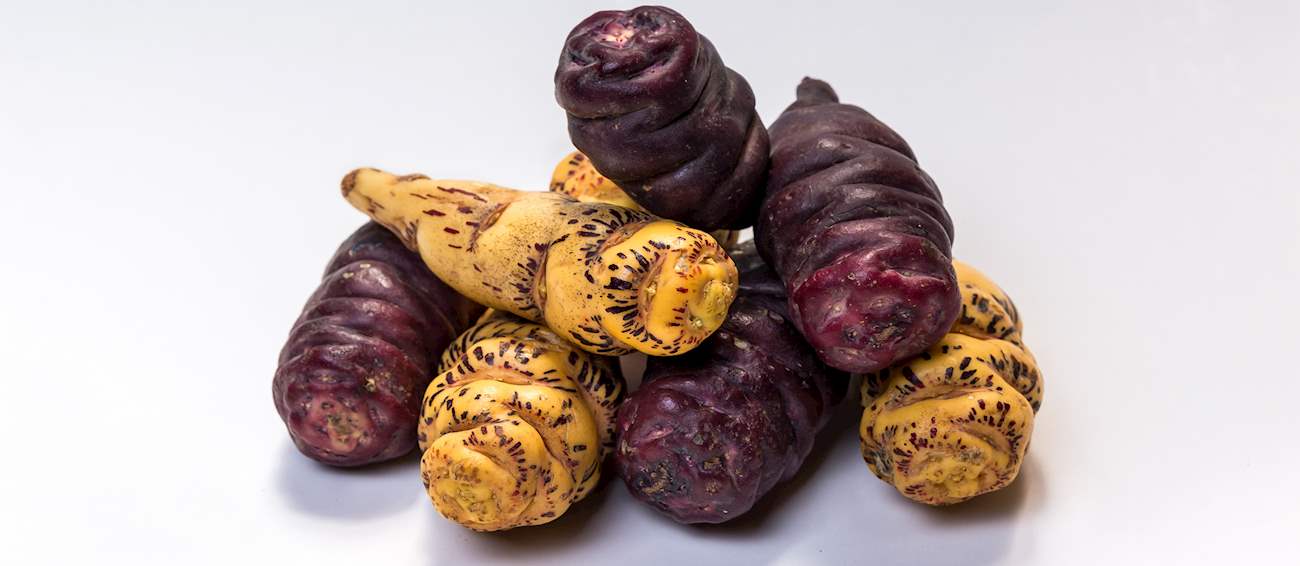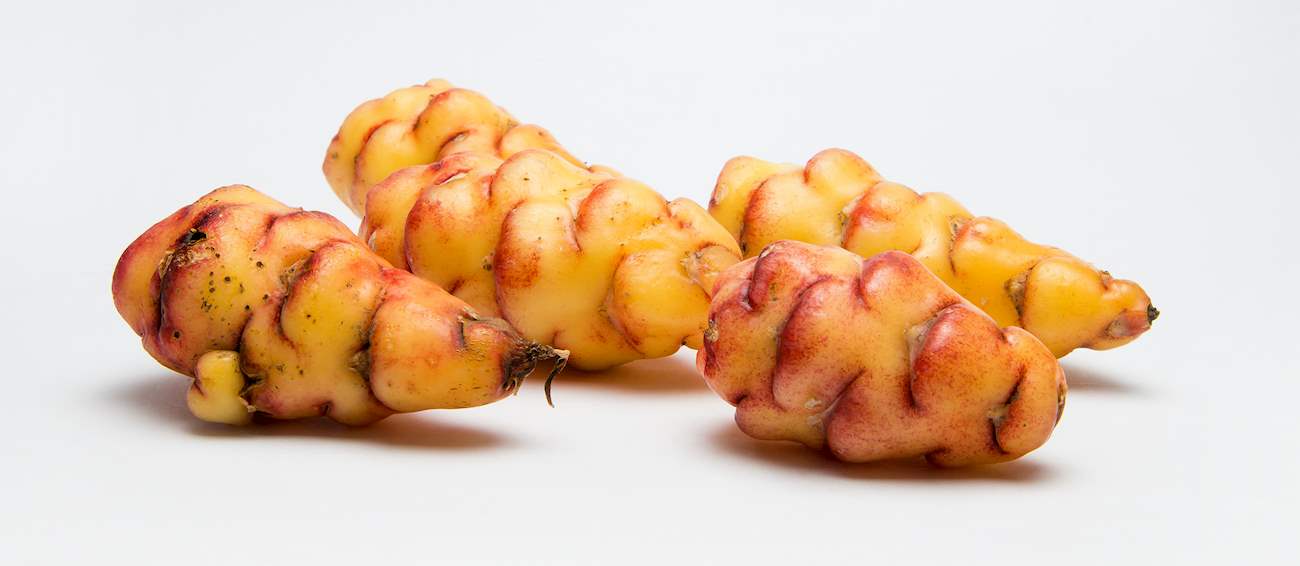One of the valuable food sources and medicinal plants of indigenous Andean populations, and native to the Andean region, mashua is a type of tuberous crop that continues to be grown in countries such as Peru and Bolivia (and to lesser extent in Ecuador), although mostly for household consumption.
There are both domesticated and wild mashua varieties, and the plant’s tubers vary in size and color, depending on the variety. Mashua tubers are shiny and cone-shaped and may come in white, pale yellow, orange, red, purple, or even black color.
Fresh mashua tubers are crispy on the outside and tender on the inside, while a slightly bitter or sour flavor, sometimes with a spicy finish, characterizes their flesh. Although they can be eaten both raw and cooked, mashua tubers are typically preferred cooked, as the flavor of the cooked tubers is more pleasant and somewhat reminiscent of cabbage. Read more
They're generally boiled, baked, roasted, or even pickled or sun-dried, and they go particularly well with roasted meat. The flowers and leaves of mashua are also edible, and just like the tubers, they can be enjoyed either raw, in salads, or cooked.
The lack of knowledge about its high nutritional value and medicinal properties, along with the common practice of associating its consumption with the lower classes are making this crop undesirable and threatening its existence.














